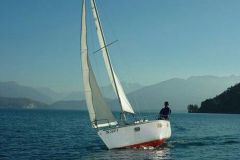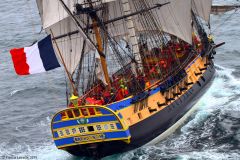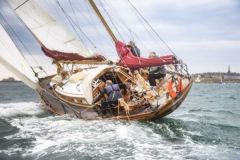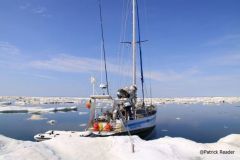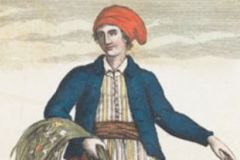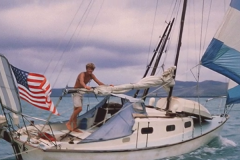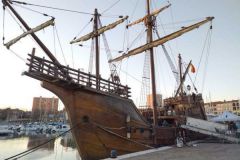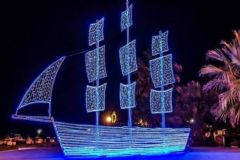The Victoria (or Nao Victoria or Vittoria) is a Spanish carrack dating from the 16 ème century, with a length of 27 meters and a width of 7 meters. A carrack is a late medieval ship with a rounded hull and recognizable by its two high fore and aft castles (forecastle and poop deck). It was part of a Spanish expedition composed of four other ships, under the command of Ferdinand Magellan, a great Portuguese navigator and explorer. The 85-ton ship had 45 crew members on board and its mission was to reach the Spice Island or the Indonesian archipelago of the Moluccas from the west. Eventually, the mission became a circumnavigation and she was the 1st er ship to sail around the world.
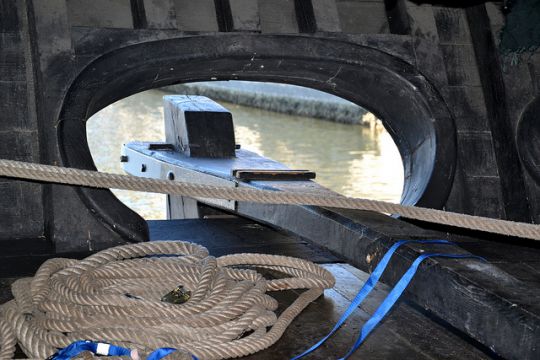
A gift from King Charles 1 er from Spain to Magellan
The carrack was built in Guispuscoa, in the Basque country, where the shipyards were very famous at the time. King Charles I of Spain gave it to Magellan as a gift, along with 4 other ships. Victoria owes its name to the church of Santa Maria de la Victoria in Triana, where Magellan pledged his allegiance to Charles V (formerly Charles I of Spain) and obtained the guarantee of being appointed captain to go in search of the Spice Islands and to have a monopoly on the route discovered.
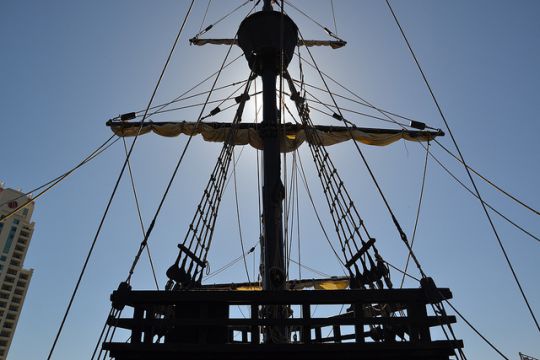
An expedition to discover the Spice Island
The other four ships making up the expedition were Trinidad (110 tons and 62 crew members), San Antonio (120 tons and 55 crew members), Concepcion (90 tons and 44 crew members) and Santiago (75 tons and 31 crew members).
Thus, 237 men set sail on September 20, 1519 from Sanlucar de Barrameda. These five ships were all Spanish caraques, except for Trinidad which was a caravel. Of the 237 sailors hired at the start, only 18 survived. Many died in a mutiny, involving three of the five captains of the expedition, who were beginning to take a dim view of the mission. Others died of malnutrition and the alés of the voyage (disease, battle...)
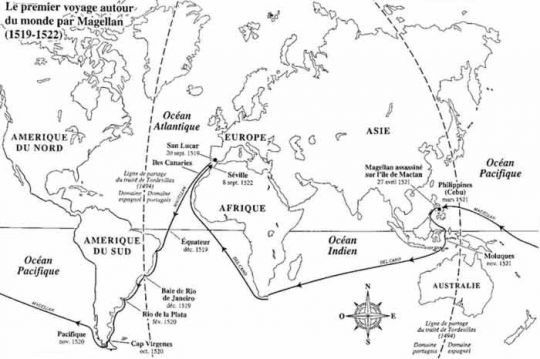
It is during this expedition that Magellan discovered a passage towards the west, at the entrance of the strait that he named Cape Virgenes (Cape Virgins), in the south of Chile, in Patagonia. The strait, which was named "Chenal de Tous-les-Saints", was later named Strait of Magellan in honor of the explorer. It is besides while trying to discover the passage leading to the west that the Santiago runs aground. In the middle of the Strait, the captain of the San Antonio turned back and found Seville in March 1921. Wandering in the Pacific and cruelly lacking drinking water and food, the crew finally found land to stop at. Later, in the Philippines, Magellan was killed by a poisoned arrow while trying to subdue the natives.
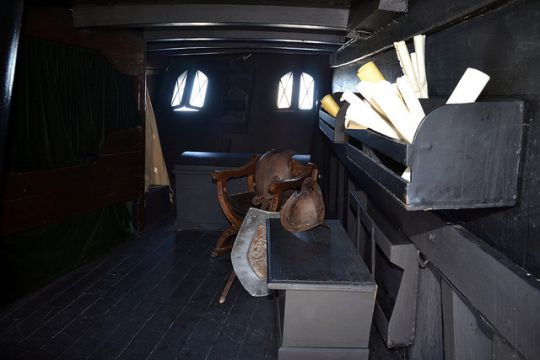
While it was necessary to take again the sea, the 113 sailors, placed henceforth under the command of Juan Sebastian Elcano, could not make sail the three ships. The Concepcion was then burned in front of the island of Bohol. The Victoria and the Trinidad set sail at the beginning of May and arrived at the Spice Island in November 1521, which was none other than the Molucca Island, and refueled themselves with spices. While the caraques were preparing to leave the port, a major waterway forced the Trinidad to stay for repairs. Four months later, it was boarded by the Portuguese while searching in vain for the Isthmus of Panama.
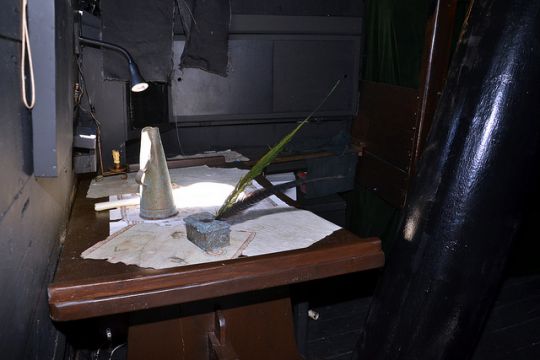
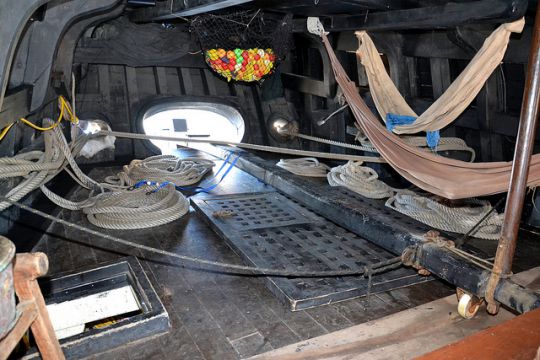
Return to Spain
The Victoria left the island of Tidore on December 21, 1521 with 60 men on board and reached Spain on September 6, 1522, after crossing the Indian Ocean and passing the Cape of Good Hope. After arriving in Sanlucar de Barrameda, only 18 crew members are alive.
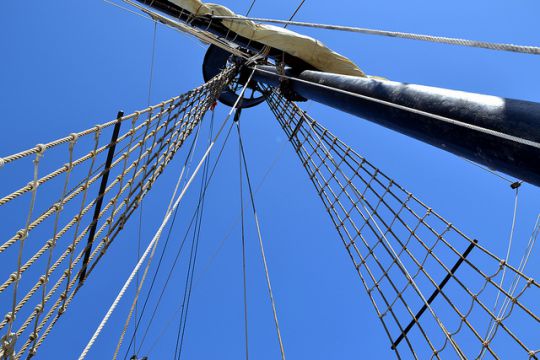
The Victoria becomes a merchant ship
Thus, the Victoria was the first ship to sail around the world, during 3 years, covering 68,000 km. When she arrived in Spain, the ship was in a bad state, the sails were torn, a leak had occurred and she was kept afloat only by pumping water. She was bought by a merchant and repaired to sail for 50 years before disappearing in 1570 during a trip from Seville to the West Indies.
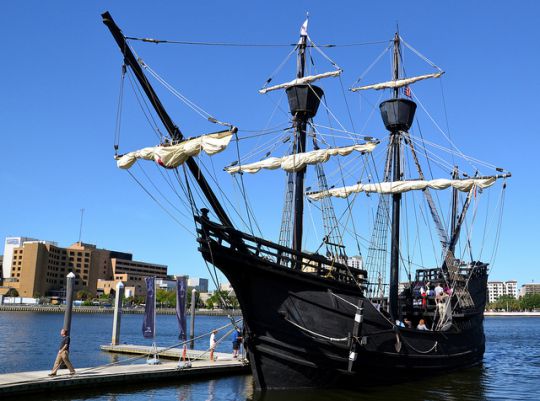
The Neo Victoria, historical reconstruction
Several replicas of the Victoria have been built, one of them in 1992 for the Universal Exhibition of Seville, which made a world tour in the manner of its big sister. In 2006, to celebrate the bi-centennial of Chile, an entrepreneur from Punta Arenas decided to build a replica of the first ship to have circumnavigated the world and whose journey allowed to explore the extreme south of Chile. The search for the plans took longer than expected, so the construction was postponed to 2009. Finally, the Nao Victoria was born in 2011 and its builder received the presidential medal even though the ship could not be delivered on time, in 2010.
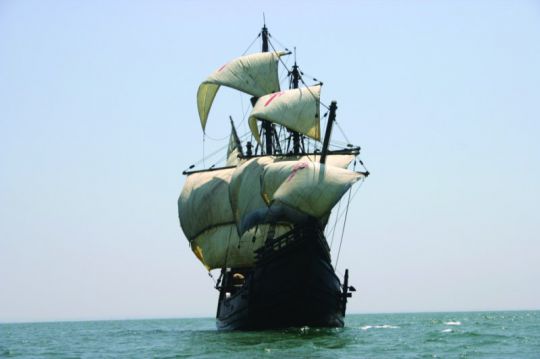
The Nao Victoria will call in France this spring and will take up residence in the Rochefort marina from April 17 to July 5. This will be her first visit to our country and, like the Hermione, she will be available for visits.
Photo credits: flickr.com/photos/walterpro/ & fundacion neo victoria

 /
/ 


